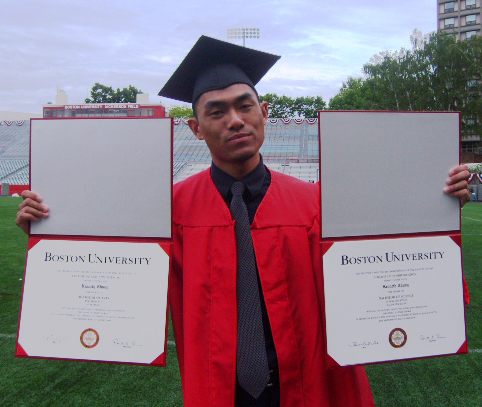“Everybody here is on a 24 hour news cycle.”
The above quote is from President Obama at a recent press conference where a reporter attempted to pressure the Commander-in-chief into speculating about how the United States would respond to violence against Iranian protesters. The president refused to be coaxed into making a statement for the sole use of being a soundbyte.
The press conference (and Obama’s response) both highlight the current collective mindset of the news industry. With the advent of widespread knowledge-sharing technologies such as the Internet and cell phones, news is now more a competition than ever before. News outlets battle to be the first to break a story. People no longer wait for 10 o’clock to find out what’s going on in the world. News websites have live feeds that automatically refresh, bringing people the latest headlines from around the world.
How far we’ve come! Of course, we’re the most knowledgeable generation that ever existed. We’re learning things at a far quicker rate. But competition and incompetency can sometimes be strange bedfellows.
Case 1: WWE + Donald Trump
For instance, consider Vince McMahon’s recent World Wrestling Entertainment debacle. In a storyline (read: fake) twist, McMahon sold a large portion of the company to billionaire rival Donald Trump. The Donald, a good friend of McMahon, made an appearance on WWE’s show Monday Night Raw to announce the ‘purchase.’ Fiction is fiction, right? Not according to major news organizations. USA Today and others reported the storyline as news, which in turn sent WWE stock plummeting 6.7 percent.
How could nobody have done their homework? Professional wrestling is known for living in a kayfabe world, meaning storylines aren’t real! (See also: Vince McMahon dies in a limo explosion) Are we to believe that news journalists are as susceptible to trickery as prepubescent kids? Sadly, yes.
Case 2: Michael Jackson’s Death + Twitter
The world lost a pop icon yesterday when Michael Jackson passed away. In what is probably the biggest story of the year so far, news spread like wildfire. The problem? The real and the fake travel hand-in-hand at lightspeed.
Twitter users were tweeting nonstop with status updates on Jackson. Users spread ‘news’ that he was in a coma, that he was still alive in the hospital, and even that he was dead (before it was even announced!). In fact, I’ve never seen so many people cite TMZ as a reputable source. TMZ?! Seriously? Harvey Levin’s paparazzi-driven gossip site is now where people get news? TMZ broke the ‘news’ that Jackson died before even CNN. That, to me, begs the question: does anybody know if TMZ even verified their information? How does anybody know whether or not they were just taking a shot in the dark? Lucky for them, they got it right. And if they were wrong, so what? It’s just TMZ is what people would say. So TMZ gets the spotlight of being the first to ‘break’ the story and they were only able to do so because they lack journalistic integrity more so than major organizations. Does this make sense to anyone?
And to even further the point, Twitterers were also spreading false rumors that Jeff Goldblum had died in New Zealand. It was based on a website with a fake death article generator that had been used before to dupe the masses. But this time, news outlets picked up on the story. Jeff Goldblum became a Twitter trend to the point where Kevin Spacey tweeted, “Jeff Goldblum is alive and well. I just spoke to his manager. Stop these stupid rumors.”
Who can we trust to bring us news? Strangely enough, this is related to the recent blog I wrote about crowdsourcing. I’m willing to speculate that at least 90 percent of the people who found out about Jackson’s death within the first six hours did so by means of person-to-person contact. That is, being told by a friend, reading about it on Twitter, Facebook statuses, text messages, etc. Isn’t this just a form of crowdsourcing the news? If this is how we spread information now, then realistically, news outlets like CNN only need a Twitter page and/or live feed. Everyone will be able to pool together stories from different sources and eventually they’ll all find out what they need to know. Is this how the news industry is going to work?
And finally, just because I think it’s such an awesome quote, here’s the full version:
“I know everybody here is on a 24 hour news cycle. I’m not.”
-President Barack Obama


